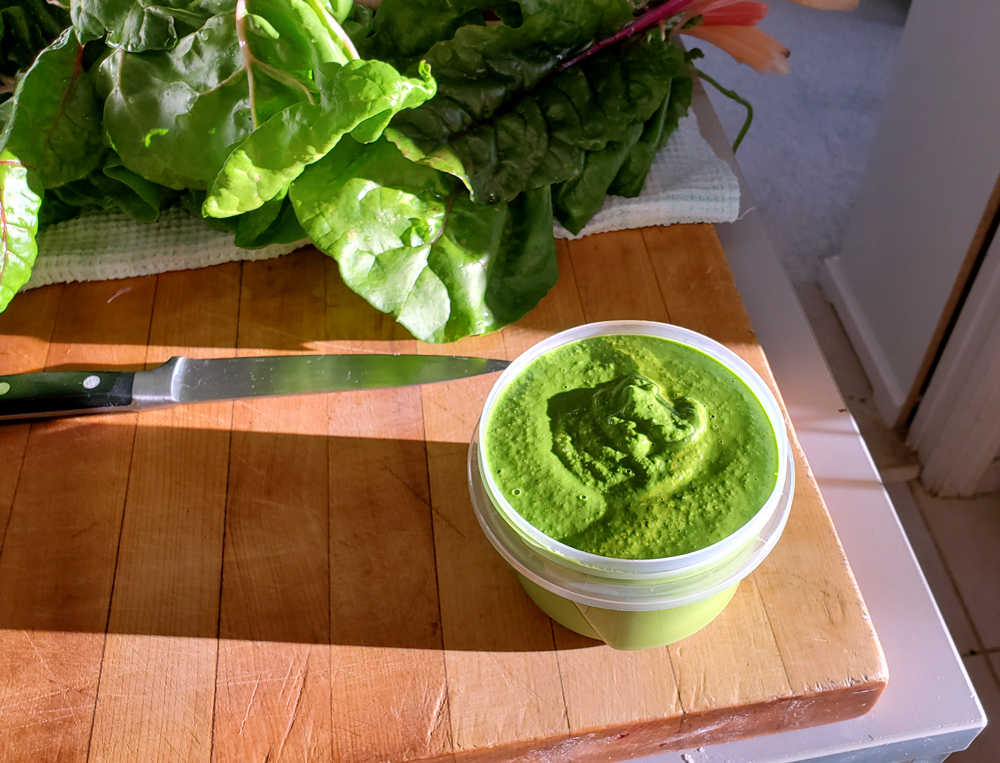heretic n.
One who holds and persistently maintains an opinion or a doctrine at variance with the accepted standards of any school or party, and rejected or condemned by it; one who rejects a generally accepted belief.
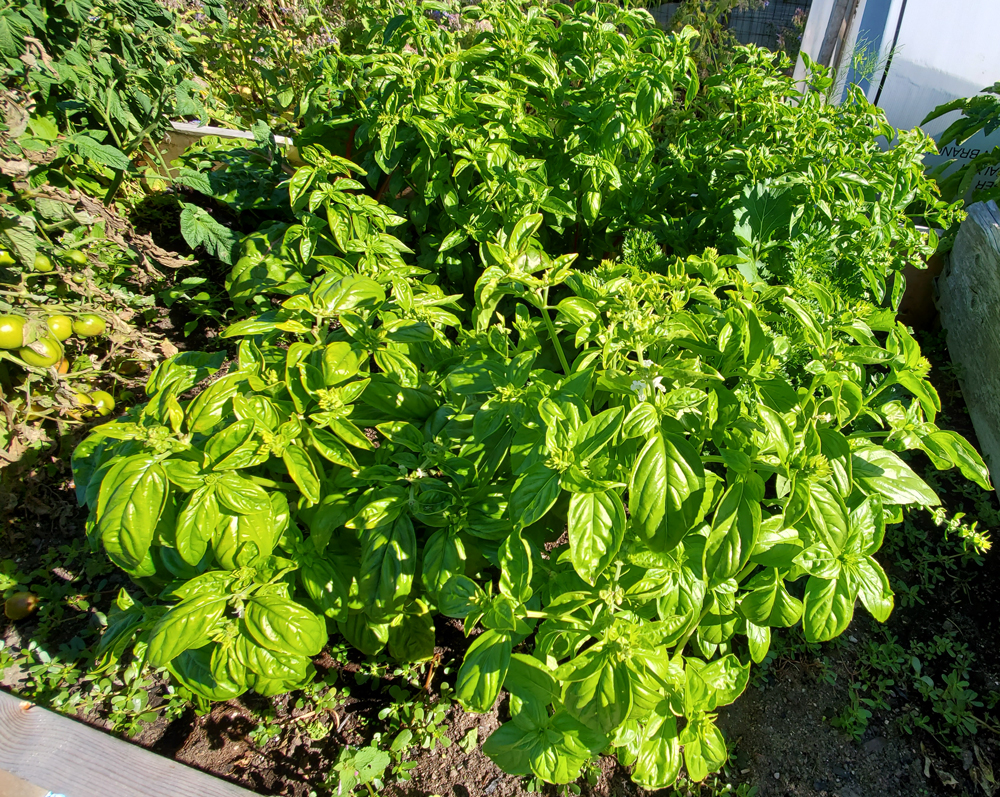
I have pretty good success with basil in my garden. I usually plant six or eight bushes and get a good harvest from them. This year I was a little behind the clock getting the garden started–I had to rebuild my garden boxes, and that took weeks longer than I had budgeted, what with a bad case of the flu and then the whole plague thingy holding the whole project back.
When I finally got everything in the ground, only four of my basil clones were suitable for transplant (you don’t have to buy expensive basil starts or even seeds. Check out this video for the fast and easy cloning procedure). But that was no problem: the yield was still pretty good.
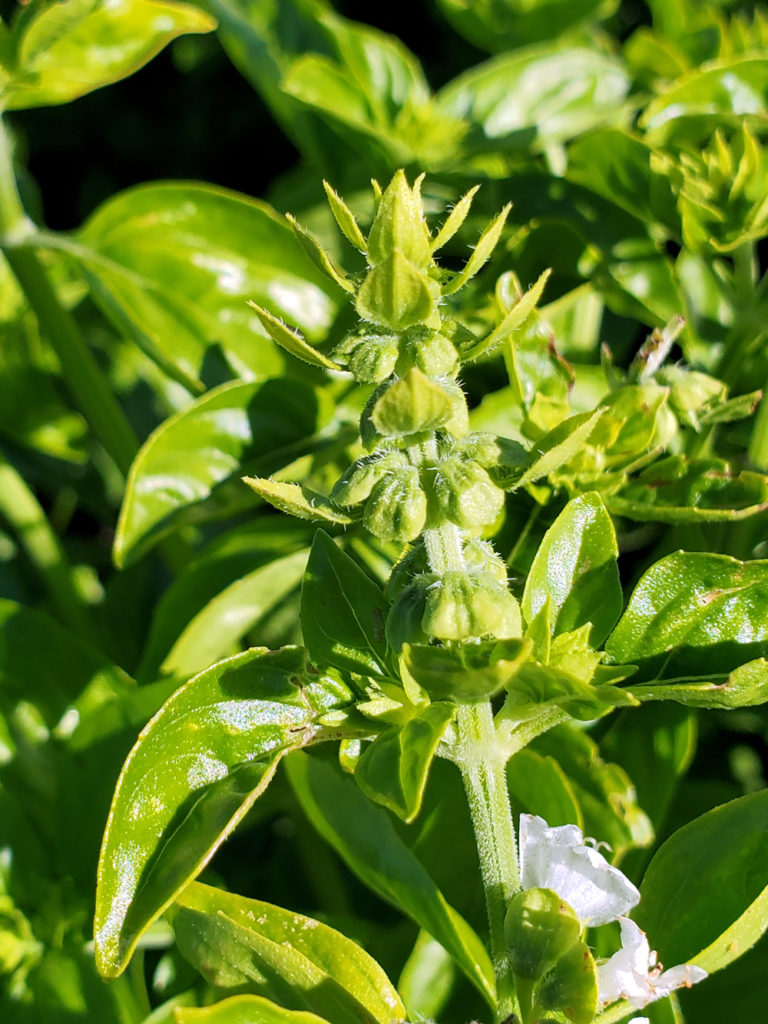
By the last week of July the plants were fully grown and trying hard to flower. I felt like a jerk brushing the bees out of the way to deadhead them (I swear, one looked at me, ‘Hey, I was eating that!) but by start of the second week of August, they were ready: time to harvest!
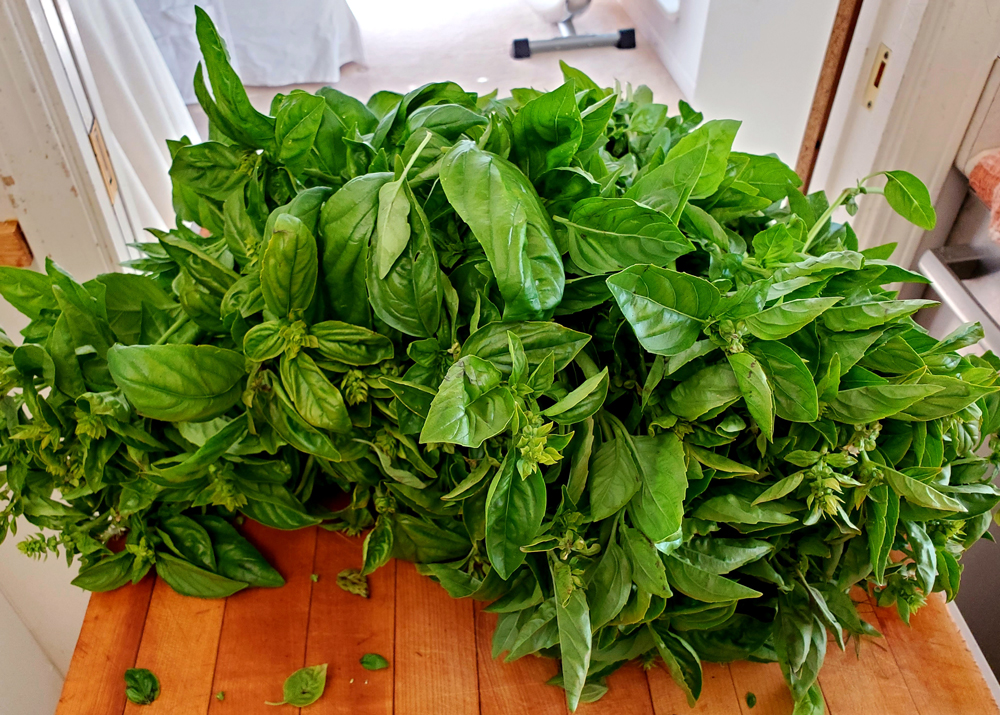
The four plants yielded pretty well and the smell in the house was fantastic.
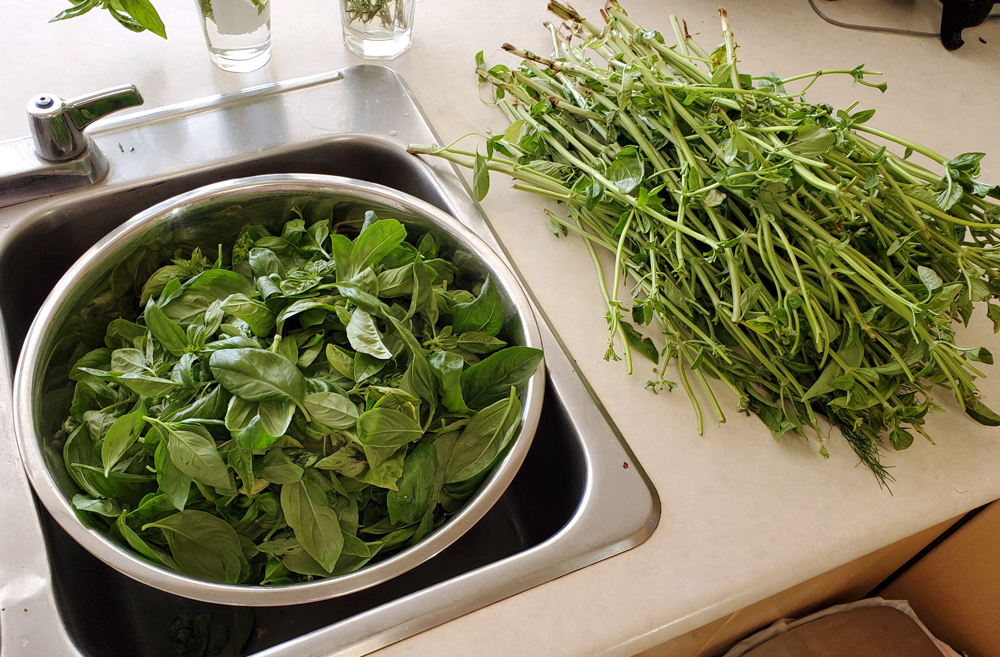
This much basil at one time just can’t be used up–I made a nice caprese salad, and threw some leaves in a tomato sandwich, but once stripped from their branches, these leaves were destined for greatness: they were going to be my yearly Heretic Pesto.
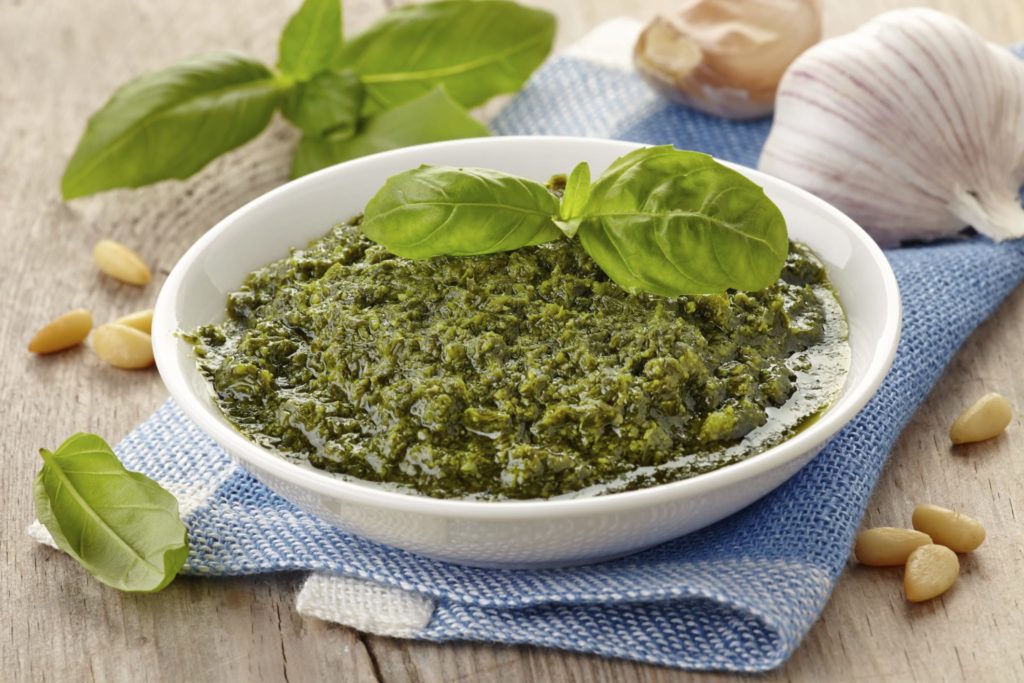
I call it that because it’s not pesto alla genovese at all, but rather a sauce made from basil, olive oil, garlic, and parmesan. The difference is that I use a blender instead of a mortar and pestle to make it. which pretty much enrages people from Genoa. Italian cooks are staunch about the ‘right way’ to cook anything, to the point where villages are convinced that the people who live ten kilometers away in the next village are insane because they use garlic in a recipe instead of the ‘right way’.
Which is pretty funny, since basil is native to India, the original sauce is from a Roman dish called moretum, made by crushing garlic, salt, cheese, herbs, olive oil and vinegar into a paste, and an early Genovese recipe for pesto calls for marjoram or parsley and Dutch cheese.
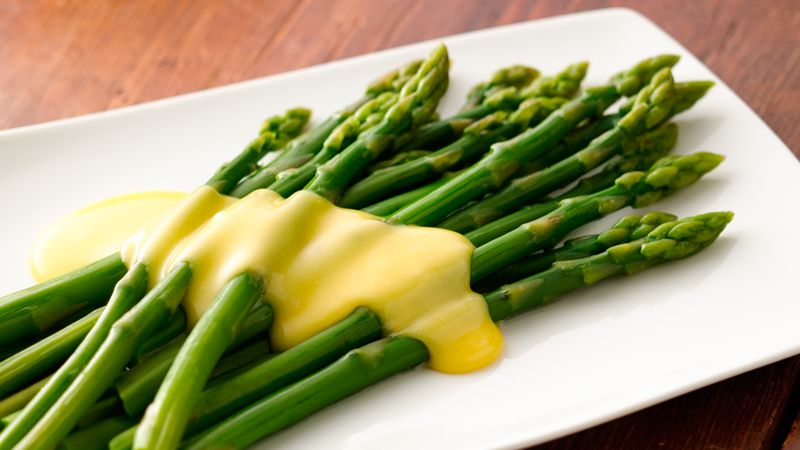
Nevermind. I just like calling it Heretic Pesto, and my version is an emulsified sauce rather than a crushed paste. Emulsification is when two normally unmixable things, like oil and water, are brought together with an emulsifying agent that allows them to form a smooth, evenly distributed mix of the two, like homogenized milk or Hollandaise sauce.
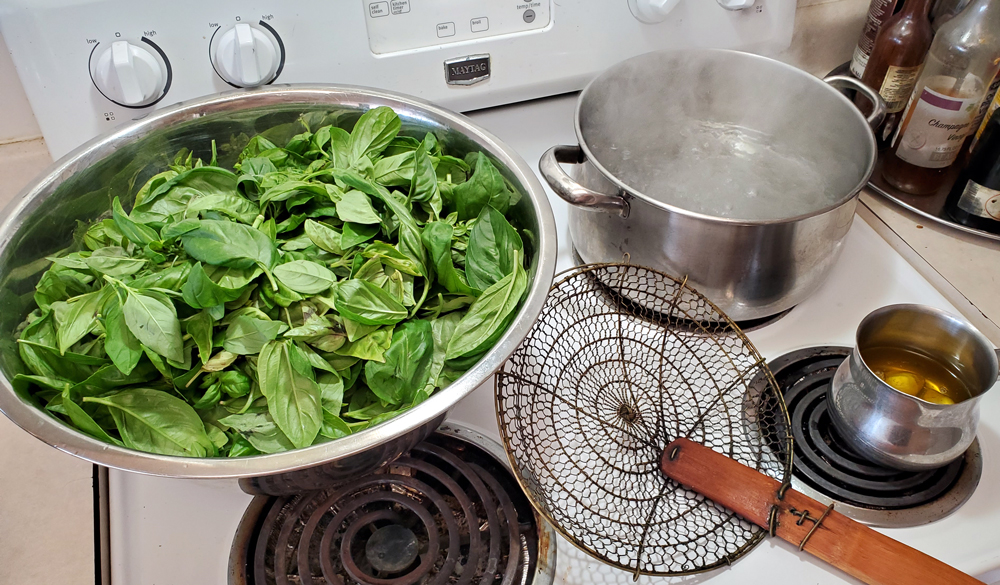
To get my pesto to emulsify I have to blanch the basil leaves. This not only breaks down the cellulose, but also sets the colour of the leaves, keeping them a beautiful bright green. The colour never oxidises after the blanch, so it never goes black or brown and stays gorgeous even after freezing.
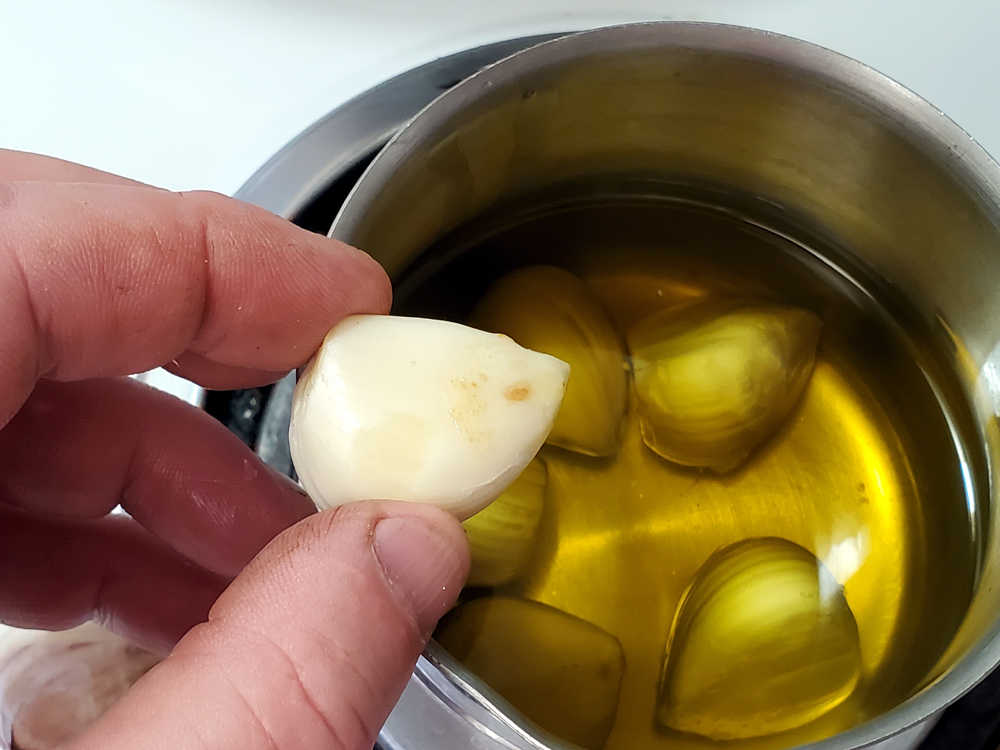
There’s another trick I do with this sauce: because it’s emulsified, it’s lighter in flavour and hits the palate differently from the traditional kind and raw garlic really overpowers it. So I poach the garlic–lots and lots of it–in high-quality olive oil, until it’s soft, but before it picks up any colour. It makes for a rich, but deeply earthy and sweet garlic character, rather than the bright, punchy taste you’d get by putting garlic into a blender.
Once the basil is blanched and cooled, and the garlic is poached, it’s time to assemble the other players and made one more heresy happen.
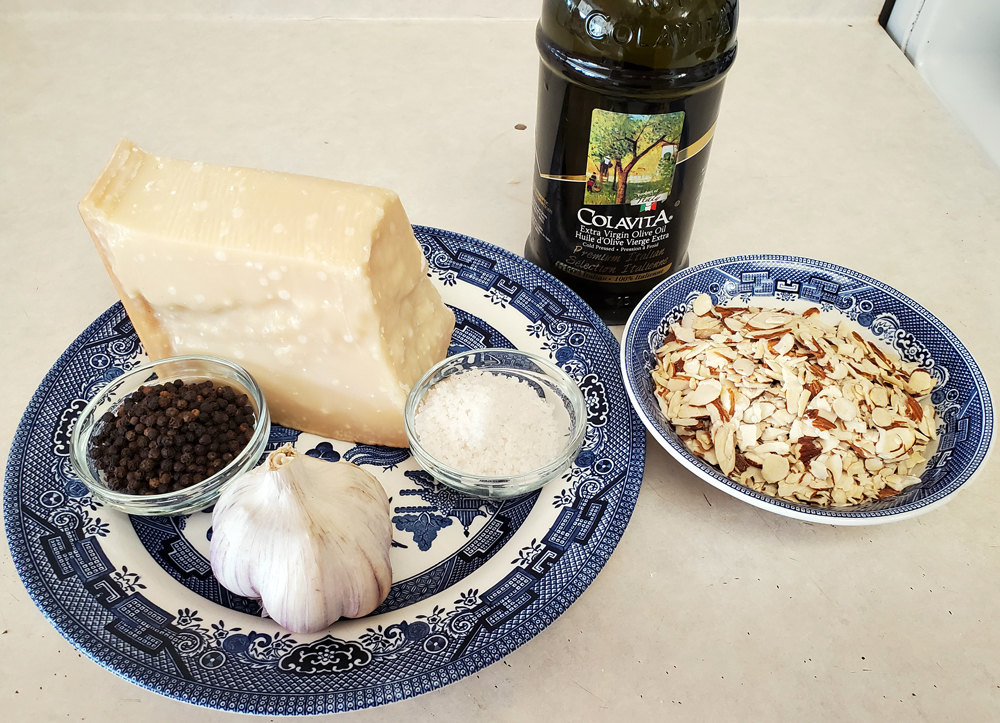
Expensive, aged Parmigiano Reggiano cheese, check! Garlic, poached and on deck, check! Sea salt and fresh Malabar pepper, check! Pine nuts, no thank-you!
I hate pine nuts. They’re greasy little wads of no-flavour, cost like plutonium, and I have never managed to buy any that weren’t at least slightly rancid. Plus, they are extremely neutral in flavour, much like the over-hyped and tasteless macadamia nut.
In their place, I use flaked almonds. Almonds are nutty, slightly sweet and mildly woody, a perfect foil for this sauce. Your mileage may vary: you might adore pine nuts (ick) you might be able to buy them for less per pound than printer ink (good luck) and they may be fresh where you live. Good for you, I use almonds and love it.
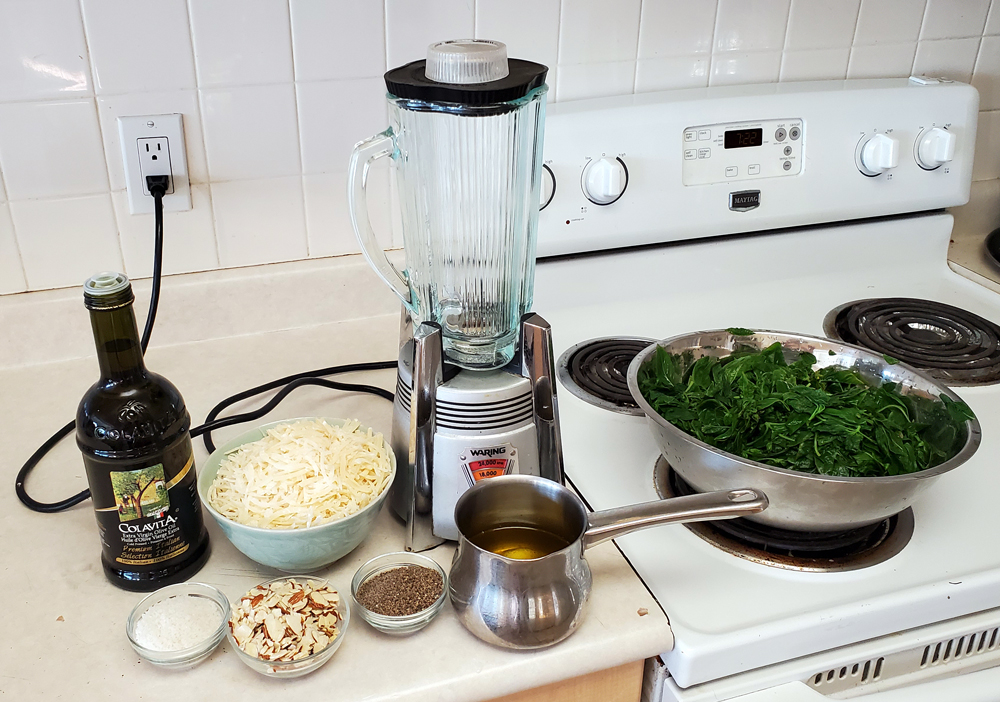
The final player on our stage is a really good blender. Many home blenders are designed to be used for 30-90 seconds at a time only, and long usage really tires them out. Buy a good one and you’ll never run out of Margaritas or excuses to drink them.
The sequence of making emulsified pesto goes like this: add about 1/3 of your blender’s capacity of blanched basil leaves. Whiz on high speed, adding just enough water to allow them to turn into teensy particles and form a smooth paste. Toss in about a half cup of nuts, gloop in a bunch (half a cup?) of olive oil, some poached garlic and a bit of the garlic oil, salt and pepper and keep whizzing until it looks great. Adjust with more salt/pepper and give it a final whizz. I’d be more accurate with the recipe, but there isn’t a recipe, just a process for turning blanched leaves into delicious sauce. Follow your heart.
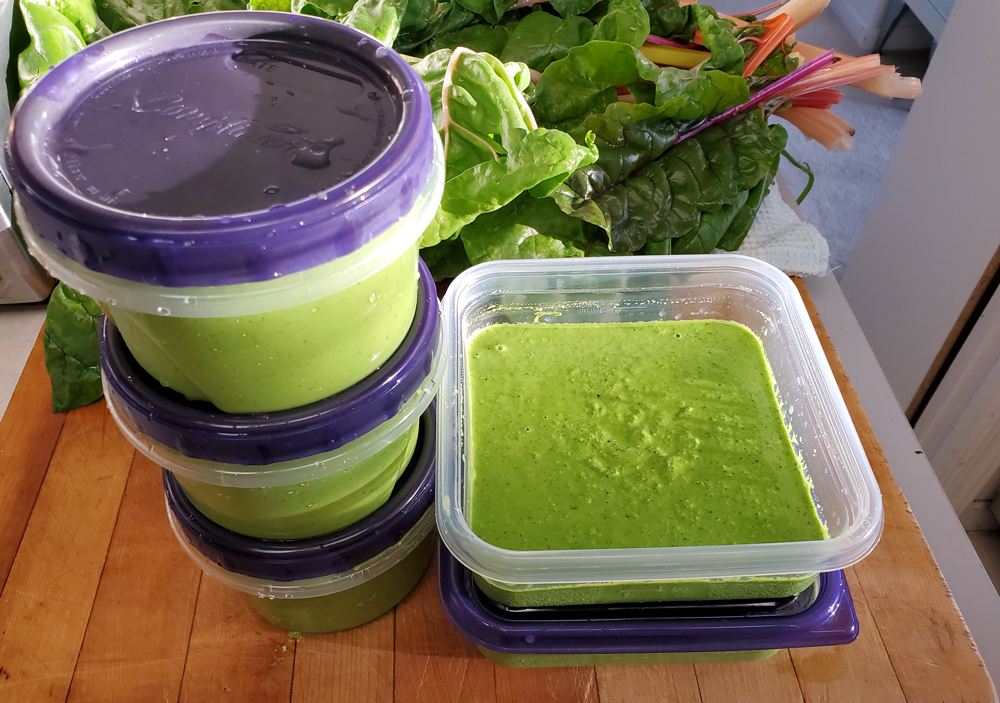
One more trick up my sleeve: if you have enough basil that you need to make more than one batch in your blender like I do, don’t pour your containers full as you go: dump it all into a large measuring bowl and give it a quick stir to make sure all your pesto is evenly flavoured and homogenous-you can even adjust the salt and pepper a final time when you do that. Then you can fill freezer containers and chortle with glee at the bounty you’ve generated!
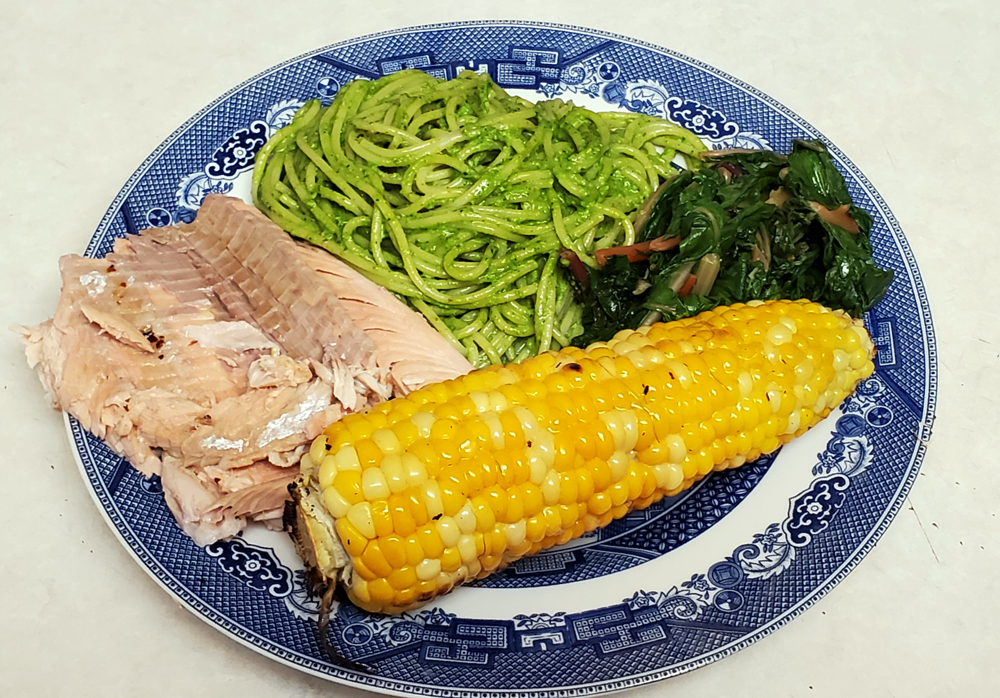
And there’s always enough left from the process to make a bit of pasta for that night’s dinner. But pesto isn’t just for pasta–try it on roast potatoes, as a sauce on a grilled steak, put it on your fish before you grill it, throw a dab on an oyster and put it on the barbecue . . . hmm, looks like I need to make more pesto.
